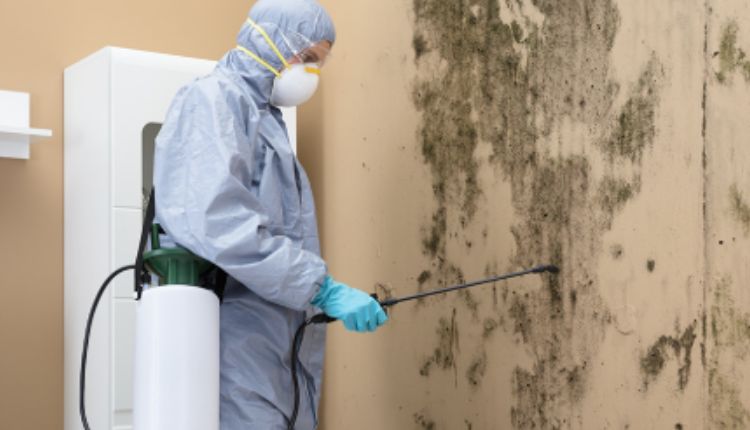Mold may not always be visible, but its effects on your home and health can be dramatic. From the unpleasant smell to the structural damage it can cause, mold is more than just an unsightly nuisance, it’s a threat that requires a strategic, professional response. If left unchecked, it can compromise indoor air quality, trigger allergic reactions, and even impact the long-term value of your property.
Understanding the full lifecycle of mold, from initial detection to final removal, is essential to properly protecting your home. While surface-level cleanup may offer temporary relief, lasting results require a deeper, more methodical approach. That’s why it’s critical to rely on proven techniques and trained specialists who know how to stop the problem at its root. One of the most important aspects of this process is making sure to address any underlying moisture issues that create the perfect breeding ground for mold in the first place.
First Signs of Trouble: What Mold Looks and Feels Like
Before mold becomes a full-blown issue, it tends to leave behind subtle clues. Maybe it starts with a persistent musty odor in the hallway. Or perhaps you notice discolored patches appearing on the bathroom ceiling. Mold tends to thrive in damp, poorly ventilated spaces, places where warm air and moisture collide. This includes basements, laundry rooms, behind appliances, or inside crawl spaces.
In many cases, what you see on the surface is just the tip of the iceberg. Mold can grow behind walls, under flooring, and within insulation. That’s why early detection is so important. The sooner it’s identified, the less damage it can do, and the easier it is to resolve.
Why Professional Mold Inspection Is the Smart First Step
If you suspect mold is hiding in your home, it’s not enough to guess. That’s where a professional inspection comes in. Using specialized equipment such as thermal imaging cameras, hygrometers, and air sampling tools, a trained inspector can pinpoint the exact location of mold, even in places you’d never think to look. This isn’t just about confirming that mold exists; it’s about understanding how far it’s spread, what kind of mold is present, and whether it’s affecting the air you breathe.
A reputable provider like www.theinspectorscompany.com/ typically begins with a detailed visual assessment, followed by lab testing if needed. These insights lay the groundwork for a customized remediation plan, tailored to your specific situation.
The Science Behind Mold Testing
Once the inspection is complete, testing helps determine the type and severity of the mold problem. Not all molds are created equal; some are relatively harmless, while others, like black mold (Stachybotrys), pose serious health risks. Air and surface samples are sent to certified laboratories where spore counts, species identification, and toxicity levels are measured.
This data informs the strategy moving forward. For instance, high airborne spore counts might suggest the need for HEPA filtration systems, while a mold colony in a wall cavity could call for controlled demolition of affected materials. With accurate results in hand, the remediation team can move forward with confidence, knowing that their actions are targeted and effective.
Remediation: More Than Just Scrubbing
When it comes to mold removal, cleaning what’s visible is just one piece of the puzzle. Professional remediation is a multi-step process designed to fully eliminate mold and stop it from coming back. This includes isolating contaminated areas, using negative air machines to prevent cross-contamination, and physically removing porous materials like drywall, carpet, or insulation that have been overtaken by mold.
Once the damaged materials are removed, antimicrobial treatments and sealants may be applied to the surrounding surfaces. These steps help ensure that any remaining spores are neutralized and that future growth is less likely. Depending on the severity of the case, remediation can take anywhere from a few days to a couple of weeks, but the peace of mind it provides is well worth the effort.
Post-Remediation Verification: Don’t Skip It
After all the work is done, one crucial step remains: verification. This is the moment when a follow-up inspection or third-party testing confirms that the mold has been completely eradicated and that indoor air quality has returned to safe levels. Without this final confirmation, you’re relying on guesswork, and when it comes to mold, that’s never a good idea.
A post-remediation clearance test compares current spore levels with baseline measurements taken during the initial inspection. If levels are within acceptable limits and no visible mold remains, you can be confident that the problem has been resolved properly.
Staying Mold-Free: Long-Term Prevention Strategies
Even after a successful cleanup, mold can return if conditions allow. That’s why the final, and arguably most important, phase of the process is prevention. Long-term mold control starts with maintaining a dry, well-ventilated home. This means fixing leaky pipes, sealing foundation cracks, and using exhaust fans in kitchens and bathrooms.
If your home has a history of moisture issues, installing a dehumidifier may help regulate indoor humidity levels, especially in basements or other damp zones. Regular HVAC maintenance is another smart move, as dirty filters and blocked ducts can trap moisture and mold spores. And perhaps most critically, homeowners must remain vigilant because mold never stops looking for a way back in.
A Complete Approach Makes All the Difference
Dealing with mold is not a one-size-fits-all task. Each home is different, each infestation unique. The key is adopting a comprehensive, informed strategy that begins with professional assessment and ends with thoughtful prevention. Mold doesn’t just disappear on its own, it takes effort, expertise, and the right tools to truly conquer it.
By understanding the full lifecycle of mold remediation, from spotting early warning signs to confirming post-cleanup success, you put yourself in the best position to protect both your property and your health. And above all, never forget to address any underlying moisture issues that might be fueling the problem behind the scenes.






